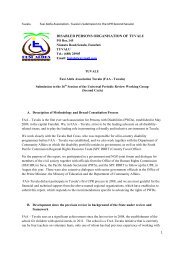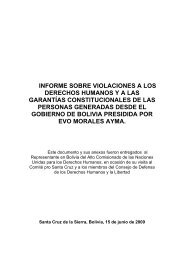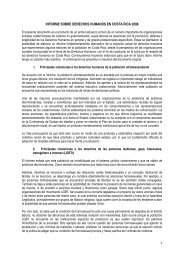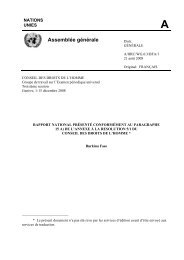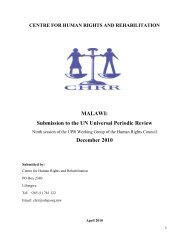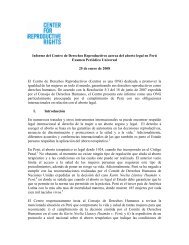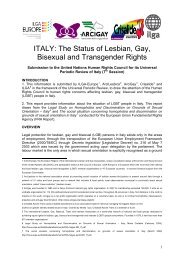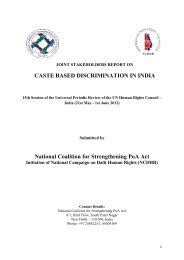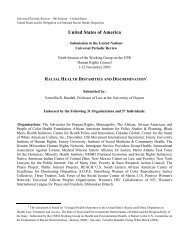Prison Needle Exchange: Lessons from a Comprehensive Review ...
Prison Needle Exchange: Lessons from a Comprehensive Review ...
Prison Needle Exchange: Lessons from a Comprehensive Review ...
Create successful ePaper yourself
Turn your PDF publications into a flip-book with our unique Google optimized e-Paper software.
working place, it is interesting to note that exchange rates within SEPs are high<br />
(almost 1:1): the return rate for two prisons in Lower Saxony were 98.9% for the<br />
dispensing machine in the women’s prison in Vechta, and 98.3% in the men’s<br />
prison in Lingen, Gross-Hesepe.... Therefore the risk of needle stick injuries by<br />
syringes not properly disposed of is very low. 234 [emphasis added]<br />
The safety of these programs has been noted by officials <strong>from</strong> the Correctional Service of<br />
Canada. In January-February 1999 a delegation <strong>from</strong> the CSC’s Study Group on <strong>Needle</strong><br />
<strong>Exchange</strong> Programs travelled to Switzerland to observe the syringe exchange initiatives in<br />
three different prisons. Among the findings of the delegation’s report was a note on the safety<br />
of these programs.<br />
Inmates involved in the needle exchange program are required<br />
to keep their kit in a pre-determined location in their cells.<br />
This assists the staff when they enter the cell to conduct cell<br />
searches. Because syringes and needles are an approved program,<br />
there is no need for the offender to conceal them in their<br />
cells. To date, no injury has been inflicted on staff by a needle.<br />
235<br />
Providing prisoners with access to the means necessary to protect them <strong>from</strong> contracting<br />
HIV and HCV is in fact compatible with the interests of workplace safety and of the maintenance<br />
of safety and order in the institutions.<br />
All the international evidence indicates that there are already<br />
needles present within the prisons of many countries. Therefore, any<br />
suggestion that the implementation of prison needle exchange will<br />
introduce syringes into a “needle-free” environment is demonstrably<br />
false. Therefore the question becomes: Which situation is<br />
preferable? The status quo – where there are syringes in prisons, the<br />
number and location of which are unknown, but these syringes are<br />
most likely contaminated with disease – or the situation in institutions<br />
with well-managed needle exchange programs, in which the<br />
number of syringes in circulation is known, the prisoners who have them are known, and the<br />
needles are sterile, or at least used by only one person whose identity is known? From a<br />
workplace health and safety perspective, the second scenario is preferable to the first.<br />
The Spanish Ministry of the Interior and the Ministry of Health and Consumer Affairs, in<br />
their 2002 guidelines on the implementation of prison needle exchange programs, succinctly<br />
summarizes the safety benefits of needle exchange:<br />
The start-up of a NEP should not increase the risk, but rather, as previously stated,<br />
result in greater safety. First of all, illicit syringes, which are usually hidden<br />
and unprotected, are replaced by program syringes equipped with a rigid protective<br />
case. Secondly, in the event of an accident, it is less likely that the syringe<br />
has been used because the inmate can and should exchange it for a new one at<br />
the first opportunity after use. Thirdly, in the event that the syringe has been used,<br />
it is less likely that it has been shared by various inmates, thus reducing the probability<br />
of it being infected and enabling the user to be identified with greater cer-<br />
In no case have needles and<br />
syringes been used as<br />
weapons either against<br />
personnel or other inmates.<br />
The safety of prison needle<br />
exchange programs has been<br />
noted by officials <strong>from</strong> the<br />
Correctional Service of<br />
Canada.<br />
Analysis of the Evidence 45



